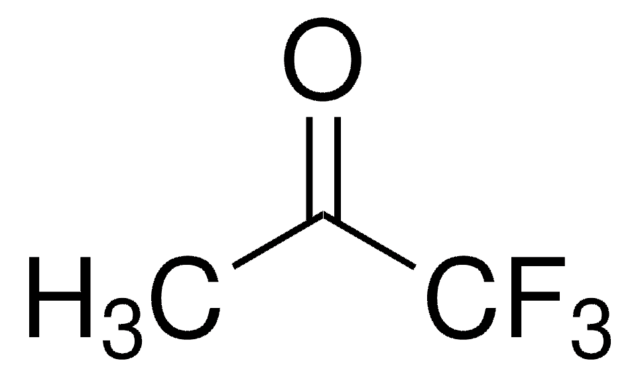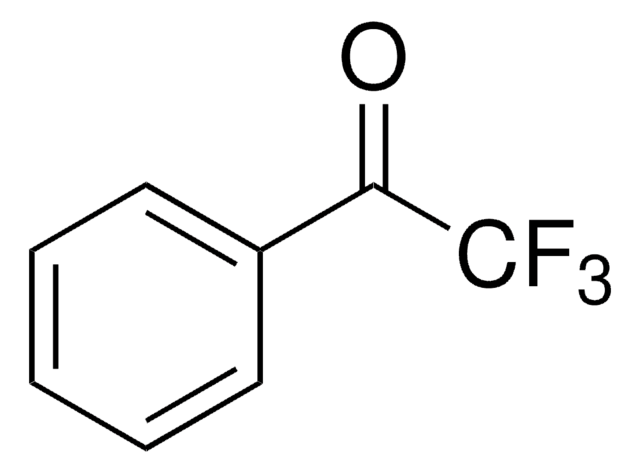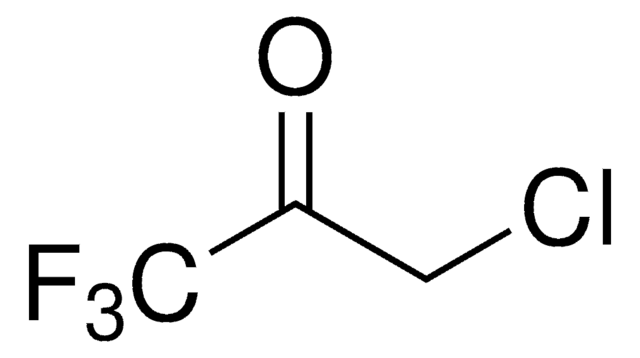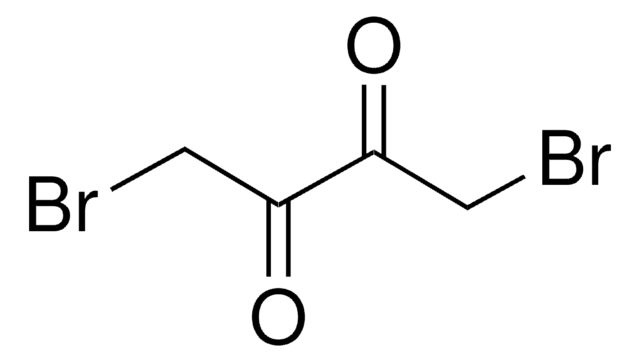374059
3-Bromo-1,1,1-trifluoroacetone
98%
Sinónimos:
1,1,1-Trifluoro-3-bromo-2-propanone, 1,1,1-Trifluoro-3-bromoacetone, 1,1,1-Trifluoro-3-bromopropanone, 1-Bromo-3,3,3-trifluoroacetone, 3-Bromo-1,1,1-trifluoro-2-propanone, Bromomethyl trifluoromethyl ketone, Bromotrifluoro-2-propanone
About This Item
Productos recomendados
Nivel de calidad
Análisis
98%
formulario
liquid
índice de refracción
n20/D 1.376 (lit.)
bp
87 °C/743 mmHg (lit.)
densidad
1.839 g/mL at 25 °C (lit.)
grupo funcional
bromo
fluoro
ketone
cadena SMILES
FC(F)(F)C(=O)CBr
InChI
1S/C3H2BrF3O/c4-1-2(8)3(5,6)7/h1H2
Clave InChI
ONZQYZKCUHFORE-UHFFFAOYSA-N
¿Está buscando productos similares? Visita Guía de comparación de productos
Categorías relacionadas
Descripción general
Aplicación
- 3-nonylthio-1,1,1-trifluoropropan-2-one
- cyclic tetrapeptides containing trifluoromethyl and pentafluoroethyl ketone as zinc binding functional group
- perfluoroalkylated trans-allylic alcohols
Para utilizar con
Palabra de señalización
Danger
Frases de peligro
Consejos de prudencia
Clasificaciones de peligro
Flam. Liq. 2 - Skin Corr. 1B
Código de clase de almacenamiento
3 - Flammable liquids
Clase de riesgo para el agua (WGK)
WGK 3
Punto de inflamabilidad (°F)
41.0 °F - closed cup
Punto de inflamabilidad (°C)
5 °C - closed cup
Equipo de protección personal
Faceshields, Gloves, Goggles, type ABEK (EN14387) respirator filter
Elija entre una de las versiones más recientes:
¿Ya tiene este producto?
Encuentre la documentación para los productos que ha comprado recientemente en la Biblioteca de documentos.
Los clientes también vieron
Nuestro equipo de científicos tiene experiencia en todas las áreas de investigación: Ciencias de la vida, Ciencia de los materiales, Síntesis química, Cromatografía, Analítica y muchas otras.
Póngase en contacto con el Servicio técnico











